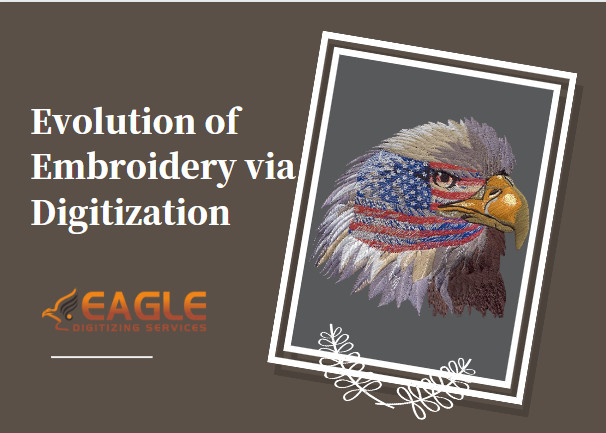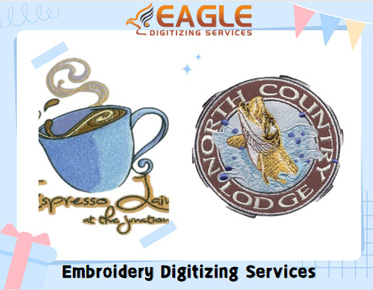Durable, Vibrant, and Timeless: Why Silkscreen Printing Rules
Silkscreen printing isn’t just a method—it’s an enduring art form that merges craftsmanship, creativity, and innovation. Known for its vibrant colors, remarkable durability, and versatility, this timeless technique has found its way into everything from fashion to fine art. Whether you're a curious beginner or a seasoned professional, silkscreen printing offers endless possibilities for self-expression and commercial success. Let’s explore why this method continues to reign supreme and how it can transform your creative endeavors.
Why
Choose Silkscreen Printing?
Durability:
Prints That Stand the Test of Time
Silkscreen printing is unmatched in durability, with designs that retain
their vibrancy even after countless washes and years of use. This longevity
makes it the go-to choice for items like t-shirts, posters, and signage that
need to withstand daily wear and tear. Unlike digital prints that can crack,
peel, or fade, silkscreen inks bond firmly to surfaces, ensuring they look as
bold and beautiful as the day they were printed. The resilience of silkscreen
prints means that they not only survive frequent washing but also resist the
effects of exposure to sunlight and harsh conditions. For projects where
quality and resilience are non-negotiable, silkscreen printing delivers
consistently outstanding results, providing a lasting impression over time.
Vibrancy:
Capturing Colors Like No Other
The thick ink deposits of silkscreen printing create colors that are
richer, deeper, and more saturated than other methods. This technique excels at
producing vibrant hues that pop off the surface, making designs come alive.
Whether you’re working with a bold graphic or intricate artwork, the level of
color intensity achieved with silkscreen printing is unparalleled. The inks
used are often opaque, allowing them to stand out even on dark or textured
materials, further enhancing the visual impact. For creatives looking to make a
visual statement, silkscreen printing ensures every shade and detail shines
brilliantly, providing an exceptional finish that can elevate any design.
Scalability:
From Small Runs to Bulk Production
Silkscreen printing’s adaptability makes it ideal for both small
projects and massive production runs. Whether you need a few custom pieces for
a niche audience or thousands of items for a major campaign, the process scales
efficiently without sacrificing quality. The ability to reuse screens for
multiple prints saves time and resources, making it a cost-effective option for
businesses and artists alike. This scalability also allows for quick turnaround
times, making it a preferred choice for businesses that need to meet tight
deadlines. Its flexibility ensures that no matter the size of the order, the
results remain consistent and professional, maintaining high standards across
varying production volumes.
Tips for Beginners
Setting Up Your First Silkscreen
Station
Starting your silkscreen printing journey doesn’t require an elaborate
setup, but investing in quality basics is essential. Begin with a sturdy table,
proper lighting, and a few key tools like screens, squeegees, and ink. Organize
your workspace to keep it clean and functional, making the process smoother and
more enjoyable. Consider adding additional storage or organizing units to keep
your tools and materials within easy reach. A well-thought-out setup allows for
a more efficient workflow and minimizes distractions, enabling you to focus on
perfecting your craft. With a simple yet effective setup, you’ll create a solid
foundation for honing your skills and experimenting with your first prints.
Common Beginner Mistakes (and
How to Avoid Them)
Every beginner faces challenges, but knowing what to avoid can save
you time and frustration. One common mistake is overloading the screen with
ink, which can lead to blotchy or uneven prints. Another pitfall is rushing the
drying process, resulting in smudges or compromised designs. Both of these
errors can be easily avoided by practicing patience and taking the time to
properly load the screen and let each layer dry thoroughly. Additionally,
overlooking the importance of screen tension can lead to distorted prints. Take
your time to understand the steps, follow instructions carefully, and embrace
trial and error as part of the learning process. Patience is your best ally in
mastering the craft, allowing you to develop a deeper understanding of the
process and achieve better results over time.
Practice Makes Perfect:
Experimenting with Techniques
Silkscreen printing thrives on creativity and experimentation, so
don’t hesitate to try new approaches. Test different surfaces, from fabrics to
wood, to see how each responds to ink and pressure. Play around with varying
ink types, stenciling methods, and pulling techniques to discover what works
best for you. Each experiment adds to your understanding, helping you refine
your craft and build confidence in your skills. Additionally, consider
exploring color gradients or multi-layered prints to further expand your
artistic range. Through consistent practice and exploration, you'll not only
improve your technical proficiency but also develop a distinctive style that
reflects your creative vision.
Silkscreen Printing for Professionals
Enhancing Efficiency in
High-Volume Production
For professionals handling large-scale orders, efficiency is key to
meeting deadlines without compromising quality. Automated presses and flash
dryers streamline printing, allowing for faster output with consistent results.
These tools reduce the physical strain of manualprinting and ensure that every piece meets the same high standards.
Investing in high-quality, automated equipment minimizes human error, reduces
the need for frequent manual interventions, and increases the overall
production rate. By investing in advanced equipment, professionals can handle
bulk orders with ease and precision, achieving quick turnaround times without
sacrificing the integrity of the final product.
Niche Markets: Finding Your
Unique Printing Style
Success in silkscreen printing often involves discovering a niche that
sets you apart from competitors. Focus on specialized markets, such as
eco-friendly designs, luxury finishes, or collaborations with artists and
brands. Developing a signature style or offering unique features can attract
loyal customers who value originality. You can also explore customizing prints
for specific events or creating limited-edition collections that create
exclusivity. By staying true to your creative identity and targeting specific
consumer groups, you’ll establish a strong presence in the industry.
Additionally, focusing on your niche market can help you build a reputation for
quality and innovation, which will distinguish you from others in the
competitive printing landscape.
Keeping Up with Industry Trends
and Innovations
The printing industry is ever-evolving, with new techniques and
technologies emerging regularly. Staying informed about trends like sustainable
practices or hybrid printing methods can keep your business competitive. Attend
workshops, follow industry leaders, and experiment with innovative tools to
stay ahead of the curve. By embracing emerging trends, you can offer new
services or incorporate cutting-edge techniques that set you apart. Embracing
change ensures you remain relevant, continue delivering fresh, exciting designs
to your clients, and maintain a competitive edge in a fast-paced industry.
Exploring the Eco-Friendly Side of Silkscreen Printing
Choosing Sustainable Inks and
Materials
Eco-conscious consumers are driving demand for greener printing practices, and silkscreen printing offers plenty
of options to reduce environmental impact. Water-based inks and materials made
from recycled fibers provide an eco-friendly alternative to traditional
supplies. These sustainable options offer comparable quality to their
conventional counterparts, making them a viable choice for businesses committed
to reducing their ecological footprint. By choosing sustainable options, you
not only help protect the planet but also appeal to customers who prioritize
ethical practices. Incorporating these choices into your process is a win for
both your business and the environment, helping to promote a cleaner, greener
industry.
Minimizing Waste in Your
Printing Process
Reducing waste is another crucial step toward sustainability in
silkscreen printing. Reuse screens whenever possible, recycle leftover inks,
and optimize your workflow to maximize efficiency. Simple habits, like using
the right amount of ink and cleaning tools promptly, can make a big difference.
Additionally, explore techniques that use less material or streamline processes
to reduce excess waste. These small but meaningful changes demonstrate your
commitment to eco-friendly practices while keeping costs low and operations
efficient. By implementing these sustainability measures, you contribute to the
longevity of your business and help foster an environmentally responsible
industry.
How
to Start a Silkscreen Printing Business
The Business Basics: Costs,
Equipment, and Space
Launching a silkscreen printing business requires careful planning and
investment. Start by creating a budget that includes equipment like screens,
squeegees, presses, drying systems, workspace setup, and initial materials.
While it’s tempting to go big, starting small with high-quality essentials can
set you up for success. Consider your space needs, ensuring it’s
well-ventilated and organized to accommodate your production goals. Factor in
costs for marketing and logistics to ensure you’re fully prepared for the
business side of things. Building a strong foundation early on will help you
grow steadily and maintain consistency as your business expands.
Marketing Your Work: Building an
Audience and Selling Prints
Marketing is crucial to gaining visibility and attracting customers.
Use social media platforms to showcase your designs, behind-the-scenes
processes, and finished products. Attend craft fairs, collaborate with local
businesses, or set up an online store to reach wider audiences. Building a
strong brand presence takes time, but with consistent effort and creative
storytelling, you’ll find your niche and grow your customer base. Additionally,
consider offering special promotions, limited runs, or customized products to
engage your audience and encourage repeat business. A well-crafted marketing
strategy not only helps you stand out but also creates lasting connections with
customers.
Overcoming Challenges in the
Printing Industry
The printing industry comes with its share of hurdles, from meeting
tight deadlines to keeping up with ever-evolving trends. Deadlines can feel
overwhelming, but meticulous planning and efficient workflows can help you stay
ahead. Staying informed about market demands and innovations is equally vital, as
trends in materials, styles, or techniques can shift rapidly. To stay
competitive, adapt to changes quickly, and stay flexible. Embracing change
rather than resisting it can transform challenges into opportunities for growth
and innovation. By turning obstacles into stepping stones, you can propel your
business forward and stay ahead of the competition.
Exploring the Eco-Friendly Side of Silkscreen Printing
Choosing Sustainable Inks and
Materials
Eco-conscious
consumers are driving demand for greener printing practices, and silkscreen
printing offers plenty of options to reduce environmental impact. Water-based
inks and materials made from recycled fibers provide an eco-friendly
alternative to traditional supplies. By choosing sustainable options, you not
only help protect the planet but also appeal to customers who prioritize
ethical practices. Incorporating these choices into your process is a win for
both your business and the environment.
Minimizing Waste in Your
Printing Process
Reducing waste is another crucial step toward sustainability in silkscreenprinting. Reuse screens whenever possible, recycle leftover inks, and optimize your workflow to maximize efficiency. Simple habits, like promptly using the right amount of ink and cleaning tools, can make a big difference. These small but meaningful changes demonstrate your commitment to eco-friendly practices while keeping costs low and operations efficient.



